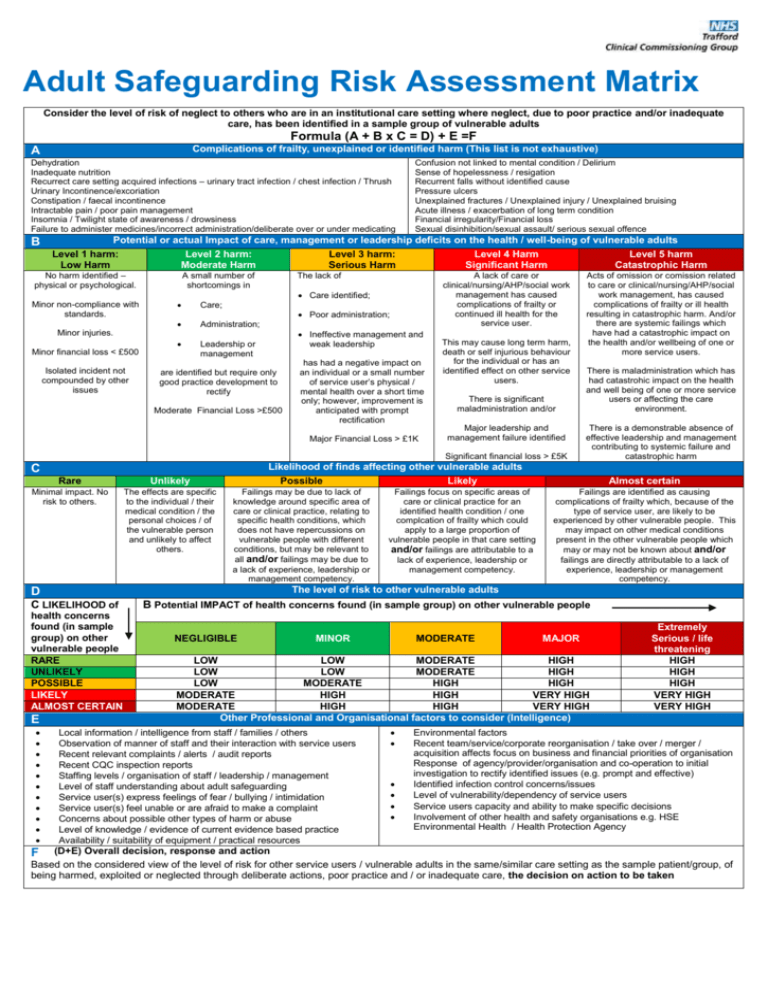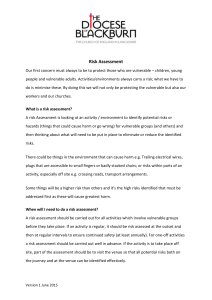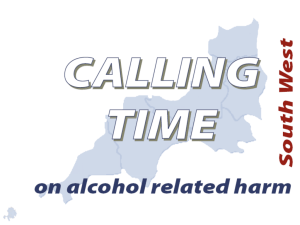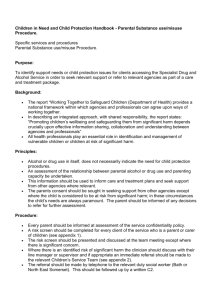Adult Safeguarding Risk Assessment Matrix
advertisement

Adult Safeguarding Risk Assessment Matrix Consider the level of risk of neglect to others who are in an institutional care setting where neglect, due to poor practice and/or inadequate care, has been identified in a sample group of vulnerable adults Formula (A + B x C = D) + E =F Complications of frailty, unexplained or identified harm (This list is not exhaustive) A Dehydration Inadequate nutrition Recurrect care setting acquired infections – urinary tract infection / chest infection / Thrush Urinary Incontinence/excoriation Constipation / faecal incontinence Intractable pain / poor pain management Insomnia / Twilight state of awareness / drowsiness Failure to administer medicines/incorrect administration/deliberate over or under medicating B Confusion not linked to mental condition / Delirium Sense of hopelessness / resigation Recurrent falls without identified cause Pressure ulcers Unexplained fractures / Unexplained injury / Unexplained bruising Acute illness / exacerbation of long term condition Financial irregularity/Financial loss Sexual disinhibition/sexual assault/ serious sexual offence Potential or actual Impact of care, management or leadership deficits on the health / well-being of vulnerable adults Level 1 harm: Level 2 harm: Level 3 harm: Level 4 Harm Level 5 harm Low Harm Moderate Harm Serious Harm Significant Harm Catastrophic Harm No harm identified – physical or psychological. Minor non-compliance with standards. A small number of shortcomings in The lack of Care identified; Care; Administration; Leadership or management Poor administration; Ineffective management and weak leadership Minor injuries. Minor financial loss < £500 Isolated incident not compounded by other issues A lack of care or clinical/nursing/AHP/social work management has caused complications of frailty or continued ill health for the service user. are identified but require only good practice development to rectify Moderate Financial Loss >£500 has had a negative impact on an individual or a small number of service user’s physical / mental health over a short time only; however, improvement is anticipated with prompt rectification Major Financial Loss > £1K This may cause long term harm, death or self injurious behaviour for the individual or has an identified effect on other service users. There is significant maladministration and/or Major leadership and management failure identified Significant financial loss > £5K Rare Unlikely The effects are specific to the individual / their medical condition / the personal choices / of the vulnerable person and unlikely to affect others. Failings may be due to lack of knowledge around specific area of care or clinical practice, relating to specific health conditions, which does not have repercussions on vulnerable people with different conditions, but may be relevant to all and/or failings may be due to a lack of experience, leadership or management competency. C LIKELIHOOD of health concerns found (in sample group) on other vulnerable people RARE UNLIKELY POSSIBLE LIKELY ALMOST CERTAIN There is a demonstrable absence of effective leadership and management contributing to systemic failure and catastrophic harm Failings focus on specific areas of care or clinical practice for an identified health condition / one complcation of frailty which could apply to a large proportion of vulnerable people in that care setting and/or failings are attributable to a lack of experience, leadership or management competency. Almost certain Failings are identified as causing complications of frailty which, because of the type of service user, are likely to be experienced by other vulnerable people. This may impact on other medical conditions present in the other vulnerable people which may or may not be known about and/or failings are directly attributable to a lack of experience, leadership or management competency. The level of risk to other vulnerable adults D E There is maladministration which has had catastrohic impact on the health and well being of one or more service users or affecting the care environment. Likelihood of finds affecting other vulnerable adults Possible Likely C Minimal impact. No risk to others. Acts of omission or comission related to care or clinical/nursing/AHP/social work management, has caused complications of frailty or ill health resulting in catastrophic harm. And/or there are systemic failings which have had a catastrophic impact on the health and/or wellbeing of one or more service users. B Potential IMPACT of health concerns found (in sample group) on other vulnerable people NEGLIGIBLE MINOR MODERATE MAJOR LOW LOW MODERATE HIGH LOW LOW MODERATE HIGH LOW MODERATE HIGH HIGH MODERATE HIGH HIGH VERY HIGH MODERATE HIGH HIGH VERY HIGH Other Professional and Organisational factors to consider (Intelligence) Local information / intelligence from staff / families / others Observation of manner of staff and their interaction with service users Recent relevant complaints / alerts / audit reports Recent CQC inspection reports Staffing levels / organisation of staff / leadership / management Level of staff understanding about adult safeguarding Service user(s) express feelings of fear / bullying / intimidation Service user(s) feel unable or are afraid to make a complaint Concerns about possible other types of harm or abuse Level of knowledge / evidence of current evidence based practice Availability / suitability of equipment / practical resources Extremely Serious / life threatening HIGH HIGH HIGH VERY HIGH VERY HIGH Environmental factors Recent team/service/corporate reorganisation / take over / merger / acquisition affects focus on business and financial priorities of organisation Response of agency/provider/organisation and co-operation to initial investigation to rectify identified issues (e.g. prompt and effective) Identified infection control concerns/issues Level of vulnerability/dependency of service users Service users capacity and ability to make specific decisions Involvement of other health and safety organisations e.g. HSE Environmental Health / Health Protection Agency (D+E) Overall decision, response and action Based on the considered view of the level of risk for other service users / vulnerable adults in the same/similar care setting as the sample patient/group, of being harmed, exploited or neglected through deliberate actions, poor practice and / or inadequate care, the decision on action to be taken F Risk Assessment Matrix Determination NHS Number: Name of patient: Address: Post Code: GP: Identified issues: Summary of concerns: Risk Assessment: Decision making formula: A (A + B x C = D) + E = F Complications of frailty, unexplained or identified harm: Outcome: + B Potential or actual Impact of care, management or leadership deficits on the health / well-being of vulnerable adults: Outcome: Level X: XXXXXX Harm x C Likelihood of findings affecting other vulnerable adults: Outcome: = D The level of risk: Outcome: + E Other Professional and Organisational factors to consider (Intelligence): Outcome: = F (D+E) Overall decision, response and action: Outcome: Person completing this risk determination: Position: Date Completed:






